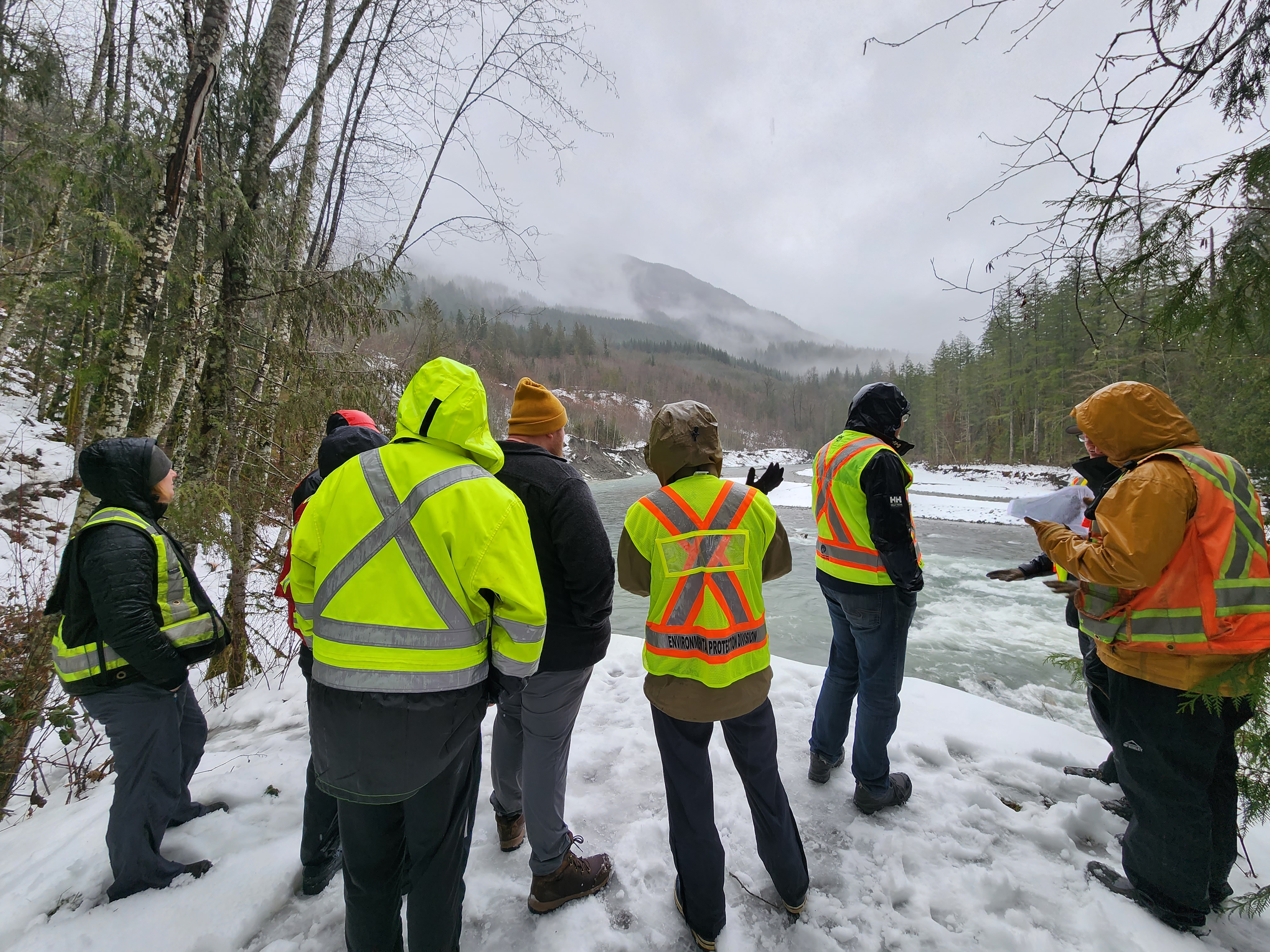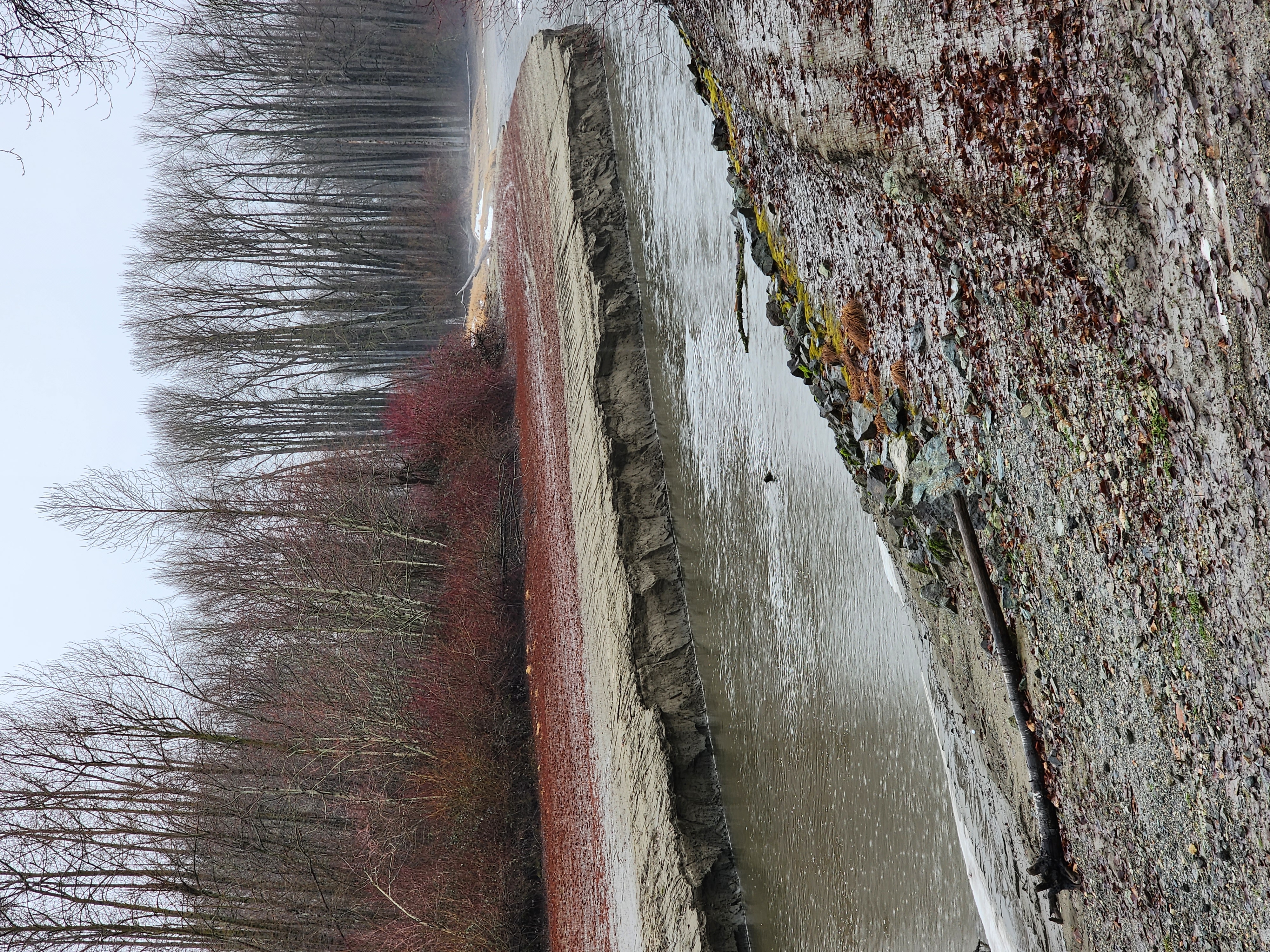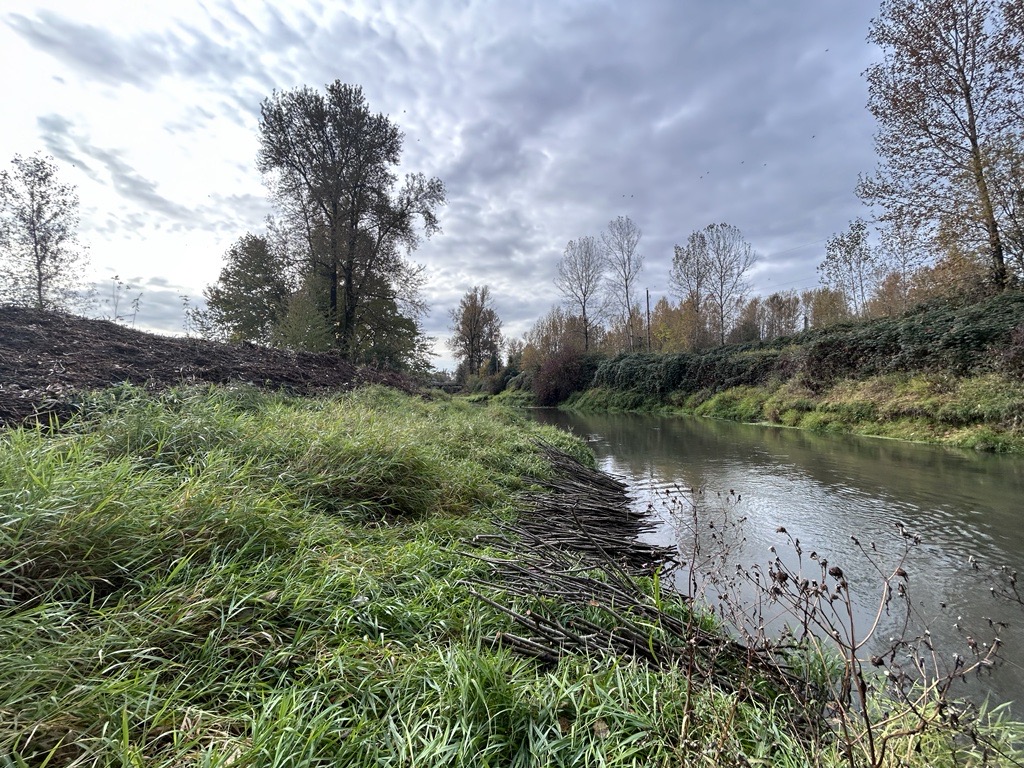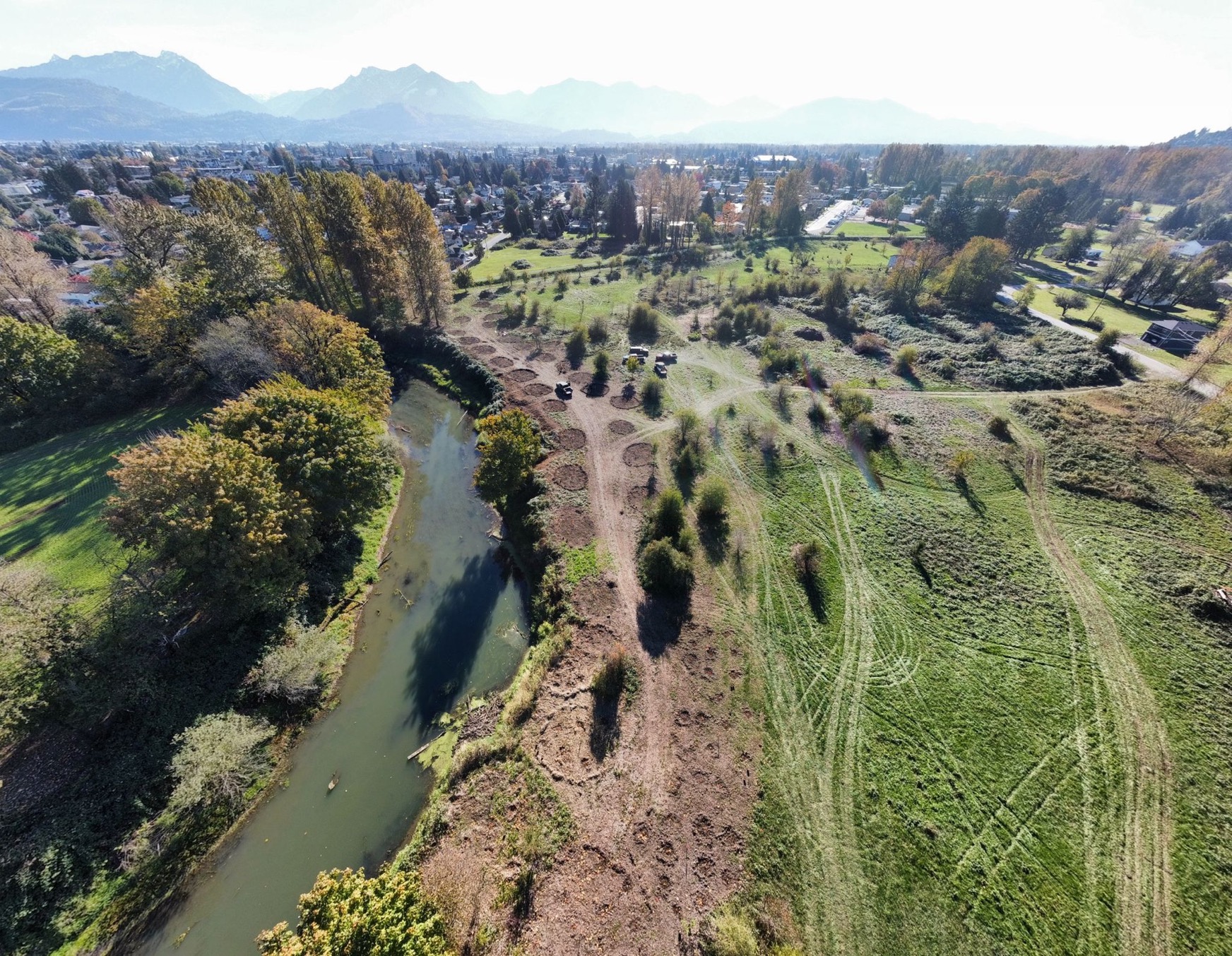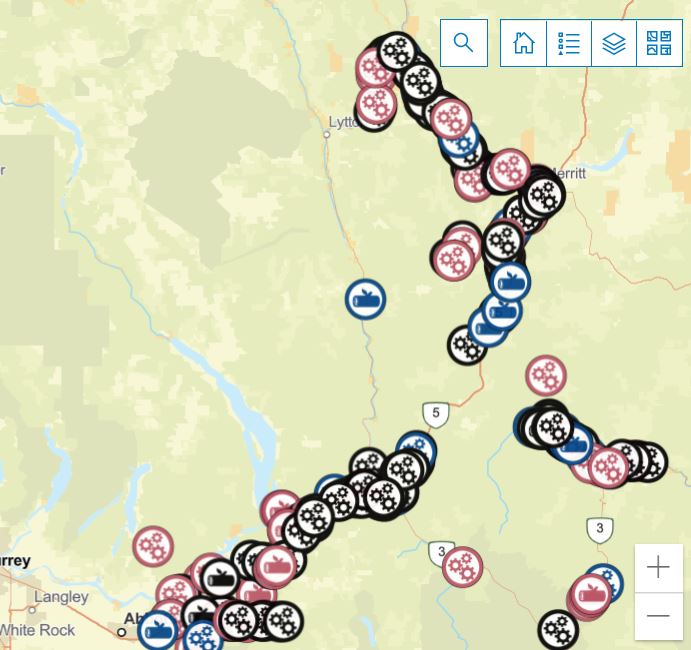Flood debris management projects

In November 2021, an Atmospheric River Event (ARE) caused flooding in British Columbia.
Flood impacts include:
- sediment movement
- damage to properties, waterways and infrastructure
The Flood Debris Management program will work to address the risks caused by debris.
Assessments
Qualified Professional (QP) Engineers assessed 133 affected waterway sites and 577 debris sites.
Task forces addressed sites where public safety risks were present. Task forces included representatives of First Nations, local authorities and private citizens. Task forces worked together on plans to remove hazards and restore affected watersheds.
Debris clean-up
Taskforces worked together on identification, collection and removal of various debris types.
Over 450 people from local communities and First Nations received specialized training. This work created 1,000+ employment opportunities.
An interactive debris map and reporting tool assisted in locating debris. This tool allowed citizens to report waterway debris. Once reported, the taskforces and qualified professionals would review and assess removal plans.
Debris removal projects occurred between March 2022 and January 31, 2023. Project teams removed over 16,000 metric tons of natural and human-made debris. Included in the debris was: 441 metric tons of metal, 98 vehicles and 4 bridges.
Review the final report StoryMap for the 2021 Atmospheric River debris clean up.
Water quality monitoring
A multi-agency provincial taskforce was created in response to concerns about water quality.
The water quality taskforce:
- Reviewed the initial water quality and potential risks from contaminants.
- Developed conceptual site models (CSMs).
- Completed human health and ecological risk assessments for the flood-impacted areas.
Assessments occurred in Sumas Prairie, Merritt, and Princeton.
The public can view the analysis on the Water Quality Monitoring Task Force Hub.
Sediment
The November 2021 ARE caused sediment movement, flooding and changes to B.C.'s river and creek systems. The sediment movement caused adverse impacts and extensive damage in some areas.
The Flood Debris Management program assessed sediment sites that posed risks to:
- public safety
- critical infrastructure
- environment
- culturally significant areas
Current work includes removing and relocating sediment from identified waterways.
News
Cultural Exploration of The Sqwa:la (Hope Slough)
The Sqwa:la (Hope Slough) is in Chilliwack and is a historic water passage which connects Xwchíyò:m (Cheam), Sqwá (Skwah) and Shxwha:y (Skway) First Nations.
After the 2021 Atmospheric River Event, large amounts of sediment caused issues in parts of the Slough. Challenges included changes to water flow, access to the river and potential flooding to the area.
The Flood Debris Management Secretariat (FDMS) is working to improve channel capacity where Sqwa:la joins the Stó:lō (Fraser River). Improved channel capacity will decrease flood threat and will be helpful to the coho, chum, and several types of trout that travel up the slough each year to spawn.
On April 5th, the Sqwa:la task force embarked on an 8km canoe journey to learn more about the Slough. Task force members for the journey included representation from FDMS, an authorizations specialist from the Ministry of Water, Land and Resource Stewardship, staff from the City of Chilliwack, Qualified Professionals who manage the project, and members from Xwchíyò:m and Sqwá First Nations. This trip was planned by the project leads and hosted by Xwchíyò:m and Sqwá First Nations to provide an opportunity to meet in person, see the project site and learn about the area’s history. The participants also experienced traditional Indigenous canoe journey protocols along the way.
As the group approached Kinsmen Park to stop for lunch, drums and singing was heard in the distance. When nearing the shore, paddles were raised to show the group came in peace. Elder Eddie Gardner, of Sqwá First Nation, led the canoe protocols. This included introducing the group, stating the intentions of the journey, and asking for permission to come ashore. The group was welcomed to shore by members from Shxwha:y Village and a feast was shared.
Along the way, the group stopped for a presentation on the water quality testing program happening throughout the Sqwa:la. Water quality testing is part of a separate restoration project, titled Shxwlistexw te Sqwá:la Shxweli: Care for the Life Spirit of the Hope Slough. Water quality in parts of the Slough has become an issue due to agricultural run-off and a slowing of water flow.
This event highlighted the importance and power of reconciliation through experiential learning. Participants were able to see firsthand how the Slough connected these communities and how issues such as flooding or reduced biodiversity impact the area. They were also able to witness and experience the traditions of the Indigenous Nations of the area. At the end of the journey participants shared reflections and offers of gratitude. It was a wonderful experience of sharing and learning between the project partners.
Flood Debris Management site tour
The Flood Debris Management Secretariat, from the Ministry of Environment and Climate Change, hosted a two-day tour of current project sites in the Fraser Valley that have ongoing recovery work from the November 2021 Atmospheric River Event (ARE).
The ARE caused substantial sediment movement, flooding and changes through B.C.'s river and creek systems, some of which caused adverse impacts and extensive damage.
Current work includes removing and relocating sediment from identified waterways which had potential to cause current or future issues to the surrounding areas.
This tour was an opportunity for teams from the Ministry of Water, Land and Resource Stewardship, and the Department of Fisheries and Oceans to meet the project teams and ask questions to gain clarification on recovery plans to assist with the permit and authorization process. Project teams were represented by members including: Leq'a:mel First Nation, Semá:th First Nation, Cheam First Nation, engineers, biologists, environmental groups and private land owners.
Image: tour participants hiked in the snow and rain to view the Slesse Park Landslide on the Chilliwack River.
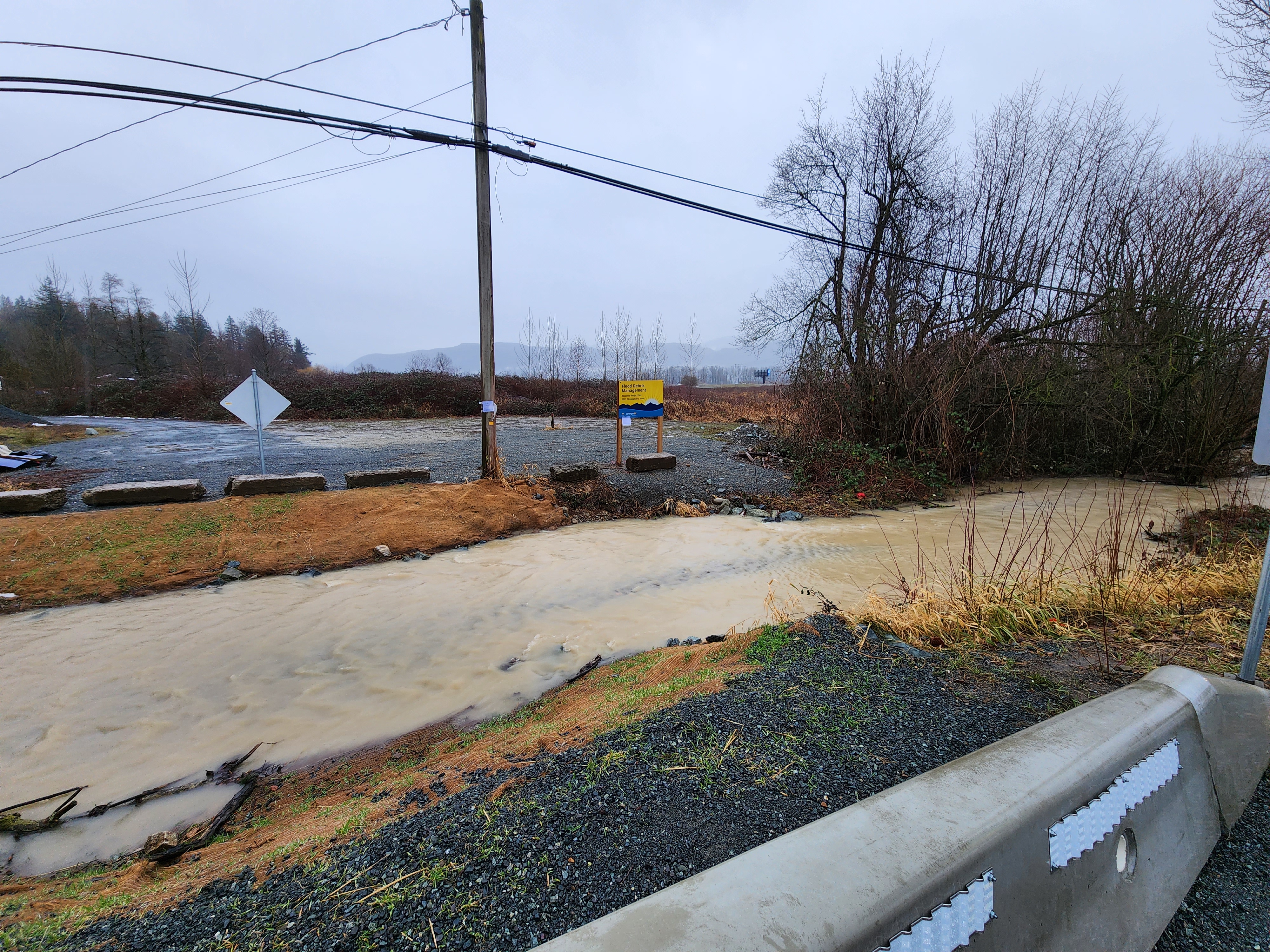 Image: Kilgard Creek showing low capacity in creek due to heavy sedimentation.
Image: Kilgard Creek showing low capacity in creek due to heavy sedimentation.
Willow whips find a new home
166 willow whip bundles harvested from the Hatzic Valley project were able to be rehomed. Approximately 110 bundles went to the Shxwlistexw te Sqwá:la Shxweli – Caring for the Life Spirit of the Hope Slough (Hope Slough project) and the remaining 56 bundles were donated to SAY Nations (Skowkale, Aitchelitz and Yakweakwioose), SAY will be using the willow for their 2km biodiversity and restoration project along the banks of Chilliwack creek (Old Chilliwack river).
Current projects
Learn more about current sediment projects happening in your area.
Services and information topics
Chawathil First Nation
Area: Chawathil First Nation outside Hope
Large amounts of sediment and woody debris accumulated at three sites in the area, which caused flooding of roads and houses. The remediation process involves removing the sediment, reconstructing existing culverts, and repairing stream banks to reestablish proper drainage.
Hicks Creek
Area: Harrison Hot Springs
The project includes sediment removal at Hicks Creek following debris flow events along creek channels. Work included bank stabilization and hydraulic movement improvements. Project goal is to increase public safety while balancing the need to improve creek flow without negatively impacting the current habitat.
This interactive debris map shows real-time location and debris removal caused by the Atmospheric River Event (ARE).
This interactive hub provides resources and tools to aid in the assessment of environmental contamination caused by the British Columbia atmospheric river events of 2021.
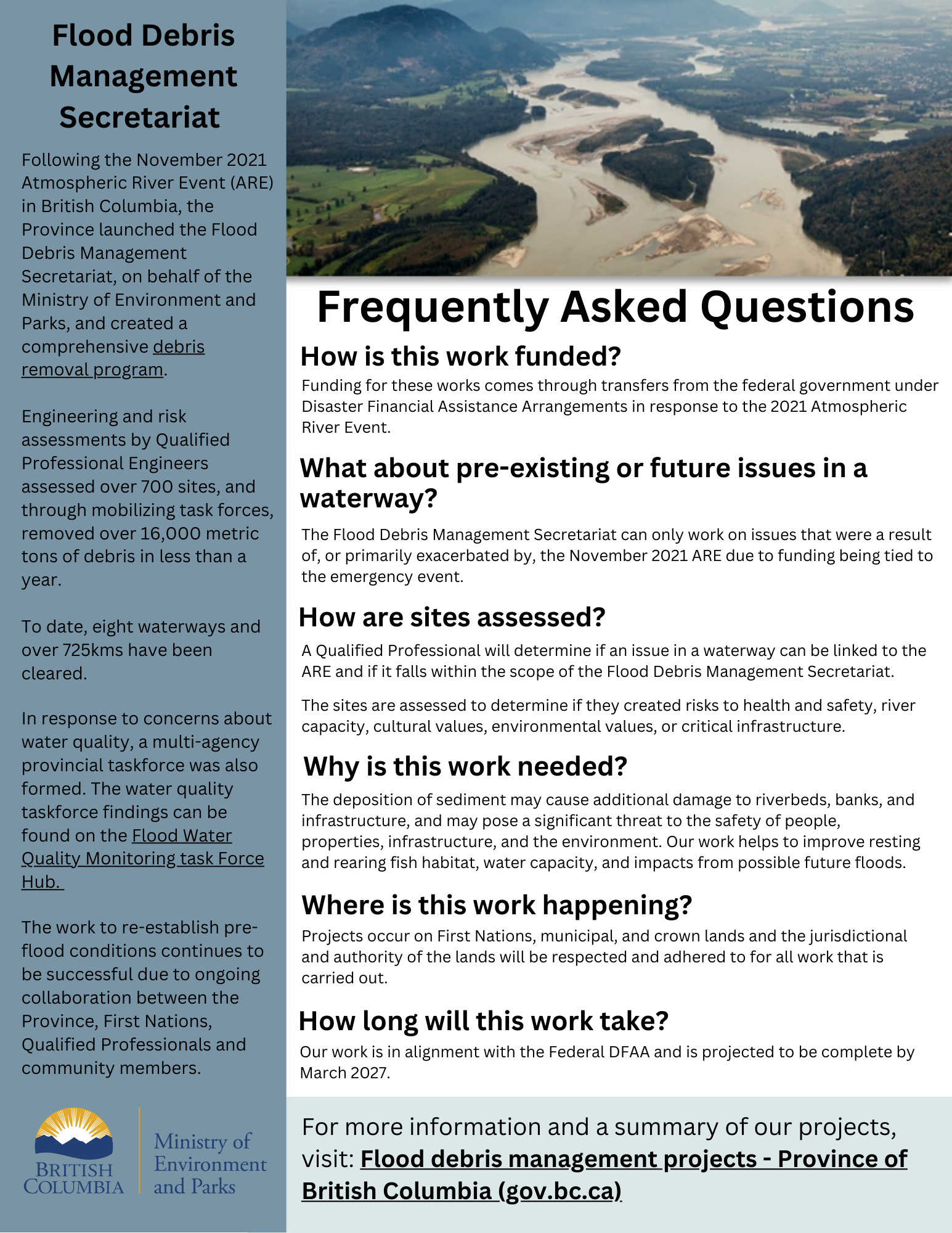 Flood Debris Management Secretariat FAQ [PDF, 411KB]
Flood Debris Management Secretariat FAQ [PDF, 411KB]
Contact information
sec.info.epd@gov.bc.ca


